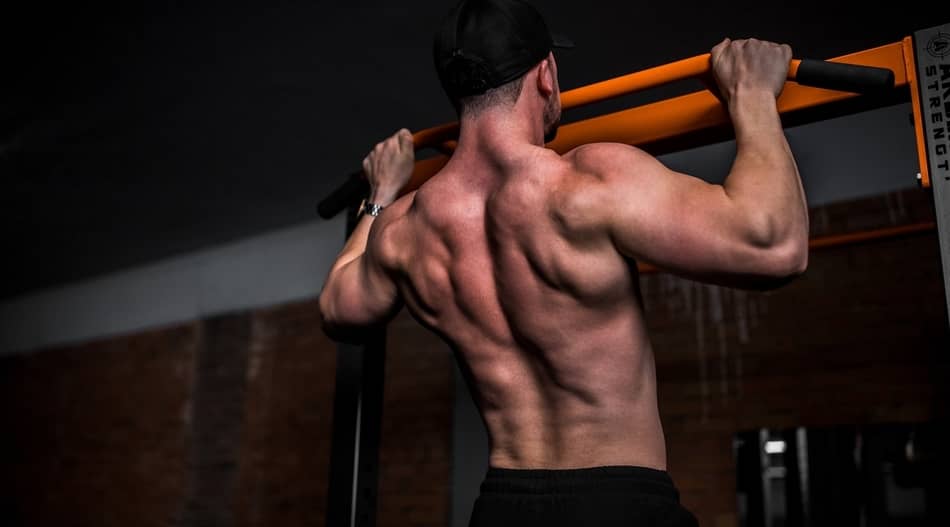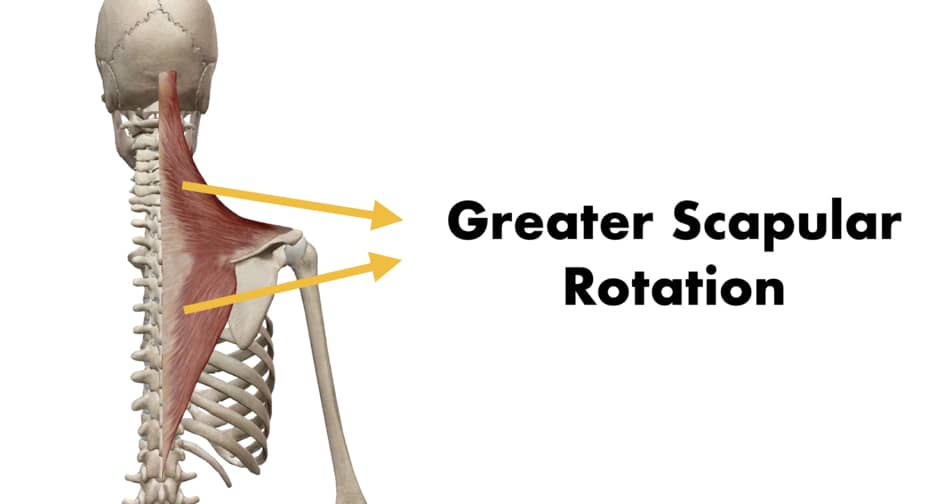Most gym-goers make the mistake of neglecting the upper back exercises in their workout because of the appearance of big or “overdeveloped traps”.
I’ve reached out to a number of people at my local gym to ask about what they think is more impressive. Keep reading to see what they had to say.

According to our survey, big traps and better than small traps for some reasons. Big and strong trapezius muscles help to combat postural adaptations, improve shoulder mobility, and reduce neck pain.
On the other hand, neglecting the traps can lead to muscle tension as psychophysiological stress has a negative effect on trapezius muscle blood flow.
Plus, some people reported that having big trapezius muscles is a clear sign of hard work, and it’s a true representation of masculine men (more on that later).
Big Traps Vs Small Traps
Big trapezius muscles represent a well-sculpted back that makes a guy’s silhouette look attractive.
Big traps are possibly the most underrated muscle group when it comes to attractiveness (only until you take your t-shirt off).
It’s not a secret that broad muscular shoulders, a big chest, and massive traps are prized assets for most guys.
Whether it is Tom Hardy or Bradley Cooper, big traps are a staple part of an attractive man’s body image.
On the other hand, small traps represent weakness and can contribute to muscle tension, stiffness, and tightness around the neck.
For me, strong traps and regular upper back workout are important because it helps me to reduce muscle tension, improve blood flow and reduce that annoying neck pain.
Some people said that it also helps them to correct postural imbalances.
Big traps vs small traps for aesthetics
What do all big and saucy-looking guys have in common? (HINT: it’s not the abs).
Women love strong, dominant guys with bear traps and broad shoulders. Massive traps are obvious regardless of clothing.
Abs are only impressive on the beach.
Are big traps a sign of high testosterone?
As a whole, well-developed traps give you a powerful look, but there is no evidence that they are a sign of high testosterone.
Big and strong traps are the result of hard training and good genetics.
Nothing shows upper body strength and power like big traps. Physically stronger men are indeed more likely to succeed in pursuing sex with multiple partners because physical strength indicates formidability (e.g. ability to fight).
Big traps not only look good.
Dr. Diana T. Sanchez from Rutgers University in New Brunswick has documented the link between women’s sexual satisfaction and submissive sex with a strong and dominant guy.
“When their submission was inconsistent, there was a negative downstream consequence of diminished sexual satisfaction on perceptions of closeness and overall relationship satisfaction,” says Dr. Sanchez.
What do women think about big traps?
According to our survey, here you can see the list of physical features that most women like about men:
- Being physically fit
- Being physically taller
- Having greater handgrip strength
- Having wider shoulders
- Having a bigger upper back
All these traits make men look and appear more attractive.
Of course, I’m not saying that your future wife will specifically choose you for your muscular traps.
Is it good to have big traps?
From an aesthetic standpoint, it is good to have big traps because well defined and muscular upper back makes a man look more attractive.
However, from the performance standpoint, big traps are not gonna make you a better athlete.
On the contrary, big traps are not always key to success.
There are some studies that have been done on why smaller, submissive, and more ‘feminine’ guys are becoming more attractive (at least to some groups of women in westernized societies).
Guys with small traps and “pencil neck” can mate with women who are more into equality in the relationship.
Big traps vs small traps for neck pain
The difference between strong and weak traps is that big traps help to reduce muscle stiffness, tension, or tightness around the neck.
Prolonged tightness or overactivity of the trapezius muscle can lead to middle and lower trapezius muscle weakness, resulting in postural adaptations and neck pain.
A study published in the Journal of Orthopaedic & Sports Physical Therapy has shown that “people with unilateral neck pain exhibit significantly less lower trapezius strength” (Petersen, 2011).

On the other hand, there is no conclusion or correlation between small traps and neck pain.
However, Dr. Petersen, a professor in the Doctor of Physical Therapy Program at Des Moines University, suggests a possible association between lower trapezius muscle weakness and neck pain.
Big traps vs small traps for shoulder mobility
There are many benefits of strong upper traps that impact your mobility and posture. Big traps are not only the physical manifestation of hard work but also positively affect the upward scapular rotation and posterior tilt. They also stabilize your spine and helps with posture.
Here’s how it works.
The traps are divided into three parts and each one has a distinct function:
- Upper traps allow you to lift your arms, support the weight of the arm, rotate, extend, turn and tilt your neck and head.
- Middle traps allow you to pull your shoulders back, extend your arms behind you, and retract the scapula.
- Lower traps allow you to depress the scapula and bring your shoulders down away from your ears.
Take a look at the graph below.

Studies have shown that big traps are good to improve all three-dimensional scapular kinematics, which helps with shoulder mobility.
Dr. Elif Turgut from Hacettepe University in Turkey documented that “isometric strength of the trapezius muscle affects upward scapular rotation and posterior tilt in asymptomatic shoulders, and it should be included in the shoulder rehabilitation programs” (Turgut et al. 2016).
According to Dr. Turgut research:
- Shoulders with strong and bigger upper trapezius muscles showed greater upward scapular rotation at 30°, 60°, 90°, and 120° of elevation in the frontal plane.
- Shoulders with strong and bigger middle trapezius had a greater scapular upward rotation at 90° of elevation in the frontal plane.
- Shoulders with strong and bigger lower trapezius showed greater scapular posterior tilt at 90° of elevation in the sagittal plane.
What are strong traps good for?
As a whole, strong and big traps are good for improving movement coordination, strength, and endurance of the neck and upper quarter muscles.
Strong traps are also good for individuals with chronic neck pain as trap exercises help to lessen scapulothoracic muscle imbalances and improve scapulothoracic posture.
Conclusion
Having big traps and a regular upper back workout is good because it helps to reduce muscle tension and headaches. It is also a sign of upper body strength, the masculine physique, and mesomorphic body type, which is generally preferred by women.
On the other hand, small traps and upper back weakness are not impressive and can contribute to muscle tension and headaches.
